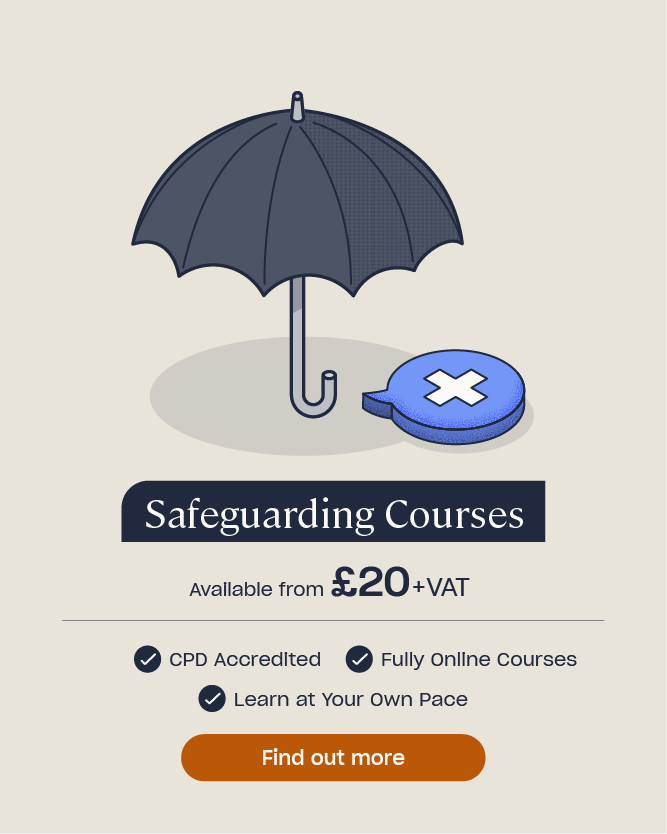Vaping in Schools: A Growing Concern and How to Address It
In recent years, vaping has become a growing trend among children and teenagers and is increasingly making its way into UK schools. The rise in youth vaping poses serious risks to health and disrupts learning, making it vital to prevent vaping in schools. In this article, we’ll look at the issue of vaping in schools, including some recent statistics, the consequences of vaping for students, how to recognise signs a child may be vaping, and provide some practical steps for addressing the issue at home and in the classroom.
Understanding the Vaping Epidemic in Adolescents
Vapes are a type of electronic cigarette that were introduced in the UK back in 2005. Despite the sale of vaping devices being illegal to anyone under the age of 18, they’ve caused what’s often described as a ‘vaping epidemic’ in adolescents and children even younger in UK schools.
What is Vaping and How Does it Work?
A vape is an electronic cigarette (or e-cigarette) that simulates smoking by heating a liquid and converting it into an aerosol that can be inhaled (or ‘vaped’).
Each vape has a battery, a cartridge and an atomiser to heat the liquid. These liquids contain nicotine as well as various chemicals and flavourings, and the vape itself comes in many colours, shapes and sizes. Sometimes they look like pens or USB sticks whilst others resemble traditional cigarettes.
A vape can be disposable or reusable, although the UK Government has recently banned the sale of single-use, disposable vapes due to the harmful effects they have on both children and the environment. As of June 2025, it is illegal to buy or sell disposable vapes.
Even though vapes don’t contain tobacco and don’t produce tar or carbon monoxide, they still come with health risks and can be highly addictive. Many existing cigarette smokers use vaping as a way to help them quit or cut down, but there are also many people – and children – who are taking up vaping as an alternative to smoking. For these people, vaping is far from harmless.
Why are Young People Vaping?
There are many reasons why children and young people take up vaping, many of which are the same as why children have typically tried smoking in years gone by. Reasons include:
- Peer pressure – if their friends are vaping, then they’ll start vaping to fit in and not be excluded from friendship groups.
- Family – if parents or older siblings vape, then children are more likely to try it themselves. It’s even thought some parents give their children vapes as a deterrent from cigarettes.
- Marketing – vapes are often colourful, sweet or fruit flavoured and have enticing names, like ‘gummy bear’ or ‘watermelon ice’, making them appear like treats. Vapes are also a lot cheaper to buy than cigarettes, making them more easily attainable by young people.
- Social media – social media can glamourise the use of vapes and there’s some evidence that vapes are being sold over social media platforms, like TikTok or Snapchat, where children can obtain them without ID.

Vaping in School Statistics
The following statistics about vaping in school shows just how much of a problem it presents:
- 25% of 11 to 15-year-olds have tried vaping (2023 NHS report).
- 1 in 10 11 to 15-year-olds vapes frequently.
- Vaping amongst high school children has increased by 6% since 2018.
- 85% of teachers believe vaping is a problem on school premises (2023 NASUWT survey).
- 54% of teachers stated that children leave lessons in order to vape.
- 35% of teachers stated that students are struggling to concentrate in lessons because of the nicotine from vaping.
- 13% of parents believe their child vapes daily (2024 Zurich report).
- 1 in 7 children have been caught vaping.
- 7.6% of teenagers get their vapes online (2023 ASH report).
- 19% of 18-year-old vape users had never smoked cigarettes (2024 UCL report).
- 1 in 6 confiscated vapes contain synthetic street drug spice (2024 University of Bath).
Vaping in School Consequences
Vaping in school has many consequences for children, including on their physical health, mental health and academic attainment. It can also be highly disruptive and distressing for teachers and parents.
- Most vapes contain nicotine, which is an addictive substance.
- Addiction can lead to loss of concentration, distraction from lessons, disinterest in daily activities and challenging behaviour in the classroom.
- Students caught vaping may face suspension, detention or exclusion from school, further disrupting their education.
- Nicotine can harm a child’s brain development, ability to pay attention and impulse control.
- Vaping is associated with increased anxiety, depression and mood swings, particularly in adolescents.
- The long-term health effects of vaping are still unknown, so children may be doing themselves long-term damage by vaping at a young age.
- Vaping can be a gateway into other drugs, such as cannabis, for some children.
- School playgrounds and toilets can become places where selling and dealing vapes is commonplace.
- Teachers are required to spend more time monitoring toilets and playgrounds, taking their focus and time away from teaching.
- Vaping in school can interrupt lessons and create a distraction for both teachers and other students.
- If a child is pressured into vaping by an older child or adult, it can surmount to grooming, especially if the adult is using it as a means of access to the child.
- The disposal of vapes can cause fire hazards as well as a litter problem.
Want to Learn More?
Vaping in schools can lead to disrupted lessons, loss of concentration and an inability to control impulses. Our online Challenging Behaviour Training course will help teachers learn the knowledge and techniques for managing challenging behaviour in the classroom effectively, appropriately and confidently.
Signs a Child is Vaping
Vaping can be much more discreet than smoking as it doesn’t leave behind the same obvious smells, cigarette butts on the ground or lighters in coat pockets that are associated with a child smoking cigarettes. This means that vaping often goes undetected by parents or teachers, but there are still signs to look out for.
Indicators that a child might be vaping include:
- A chronic cough, wheezing or shortness of breath that doesn’t go away and isn’t because of an illness.
- Frequent headaches that are out of the ordinary.
- A dry mouth, dehydration or increased thirst.
- Unusual behaviour changes and mood swings.
- Unexplained changes in performance at school.
- Changes in their normal sleep pattern.
- Needing to go for a break or to the toilet every few hours.
- Mental health problems, particularly anxiety, stress or paranoia.
- Lingering fruity or sweet smells in the air or on their clothes.
- Empty vapes, cartridges, bottles or other supplies in the bin or on the floor.

How to Stop Vaping in Schools
Addressing and preventing vaping in schools can be difficult and needs to be a joint effort between teachers, parents and students if it’s to be truly effective. Below are some tips for how to stop vaping in schools:
- Behaviour policies – ensure you have a school behaviour policy that mentions vaping as a named, unacceptable behaviour. Explain the consequences of vaping at school in the policy but avoid automatic suspension as the only punishment. Reserve exclusion for serious or repeated breaches or where vaping is linked with poor conduct.
- Clear communication with parents – regularly update parents on school policies around vaping and inform them of the potential consequences for involvement in vaping or being present when others are vaping.
- PSHE education – incorporate vaping into PSHE lessons and teach about topics such as nicotine addiction, brain damage, peer pressure and misleading marketing by vaping companies.
- Offer school counselling – giving confidential support to students caught vaping or who express interest in quitting vaping or smoking can be an important intervention and change students’ lives.
- Normalise offering support – make it normal for students to talk openly about vaping pressures without fear of punishment, whether it’s one-on-one with a teacher, in counselling or in PSHE lessons.
- Anti-vaping culture – make anti-vaping a school value and celebrate healthy behaviours, provide positive role models and ensure the anti-vaping culture is school-wide. Teachers and parents must lead by example, too.
- Vape-free zones – ensure students have visibility of ‘vape-free’ signage, especially in toilets and hidden areas of the school.
- Work with parents – schools should work alongside parents and ensure a consistent message is shared across school and home. This helps to build trust and reduces mixed signals.
- Lead by example – if you vape, be honest about it and explain why, but don’t glamourise it and avoid vaping in front of students at all times.
Vaping in schools is a growing concern as it causes a range of different consequences for both students and teachers. Schools should work with parents and children in order to address the problem of vaping, being sure to establish an anti-vaping culture and looking out for the signs that may suggest it’s happening on school premises.
Further Resources:
- Safeguarding Courses
- Safeguarding Children Legislation: Guidance for Schools
- Working Together to Safeguard Children: Key Points and Changes
- Effective Interventions in Education: Types and Examples
- How to Deal with Challenging Behaviour in the Classroom
- How to Create an Effective Culture of Safeguarding in Schools
- Creating a School Behaviour Management Policy











